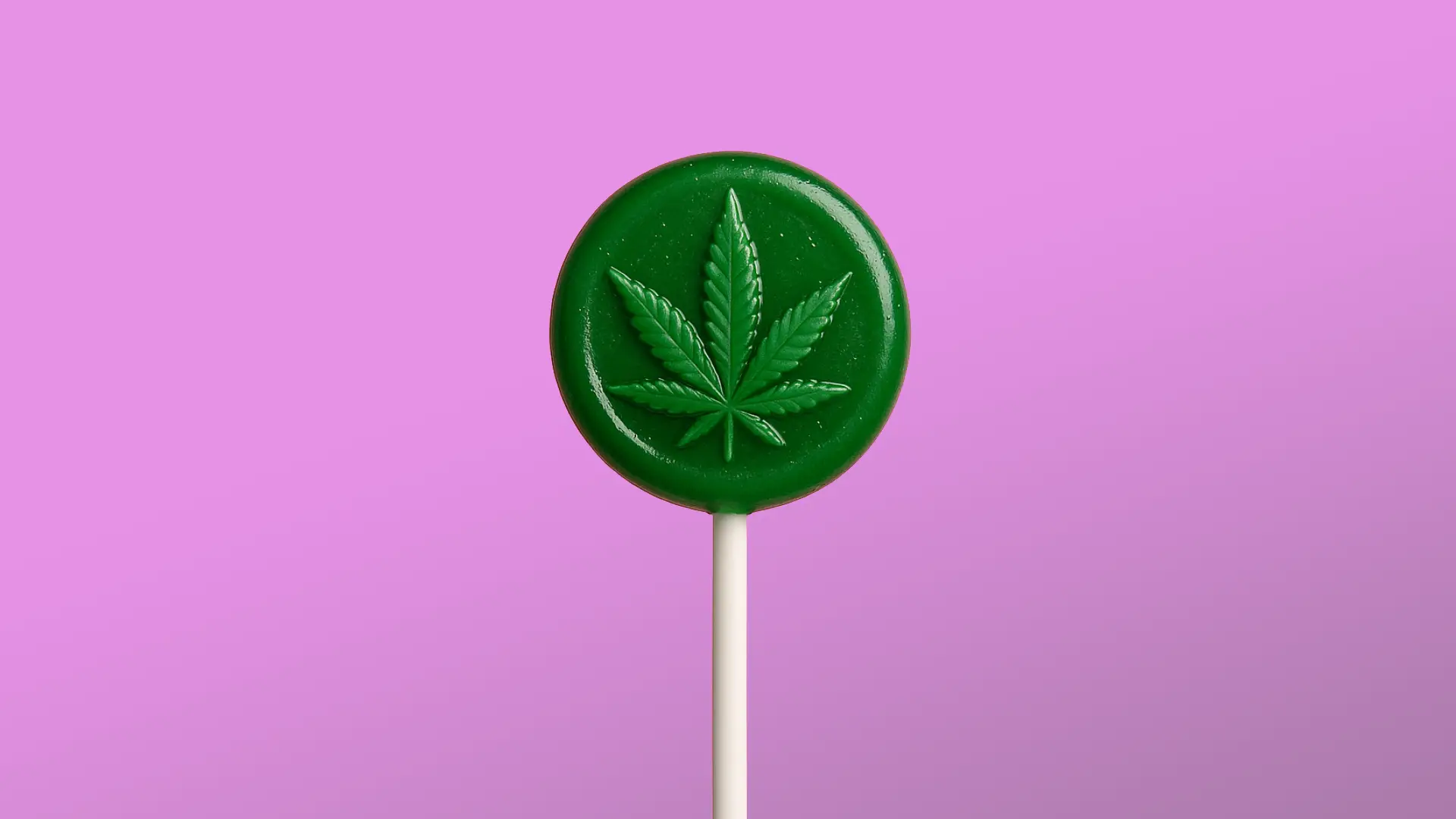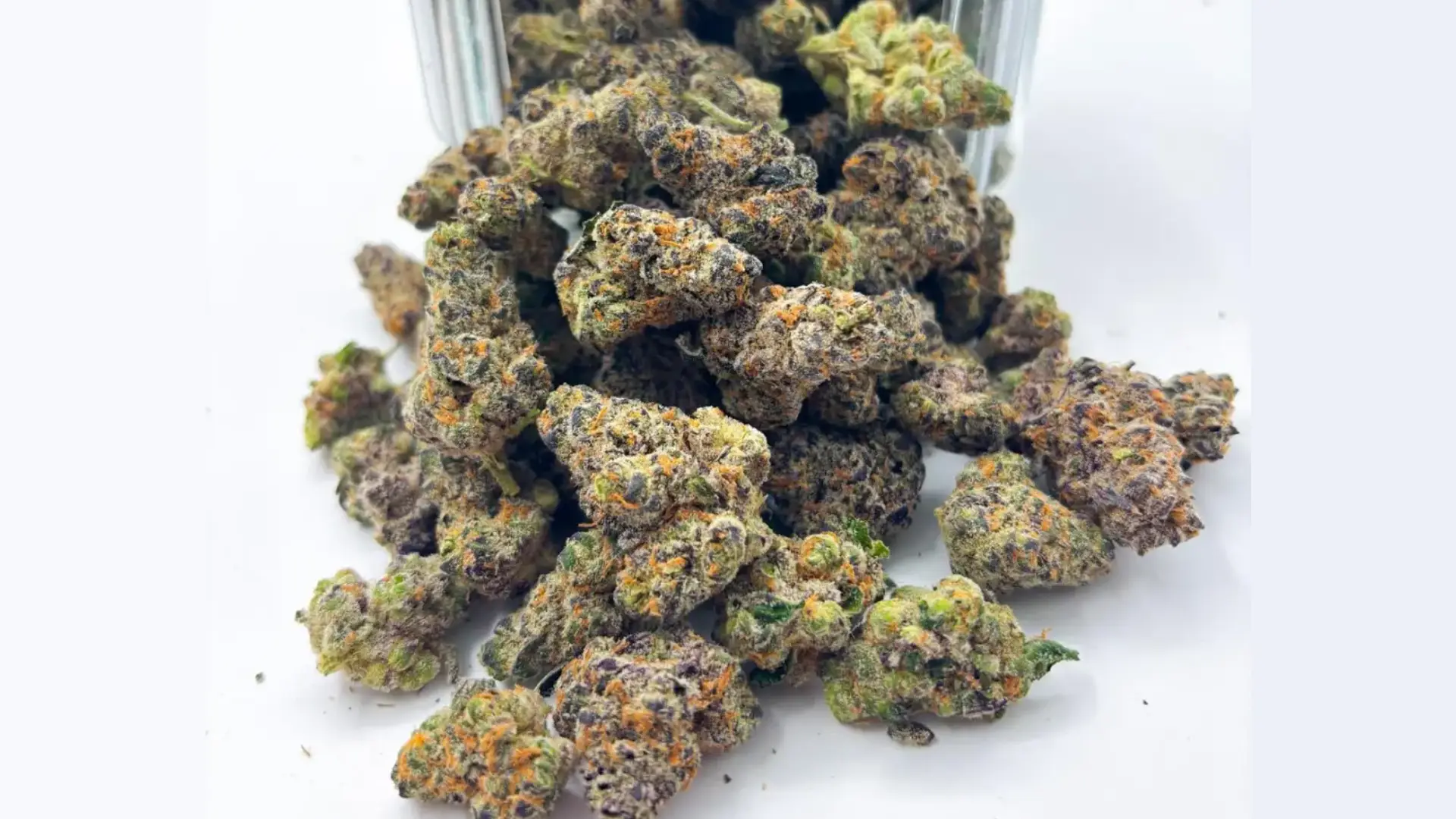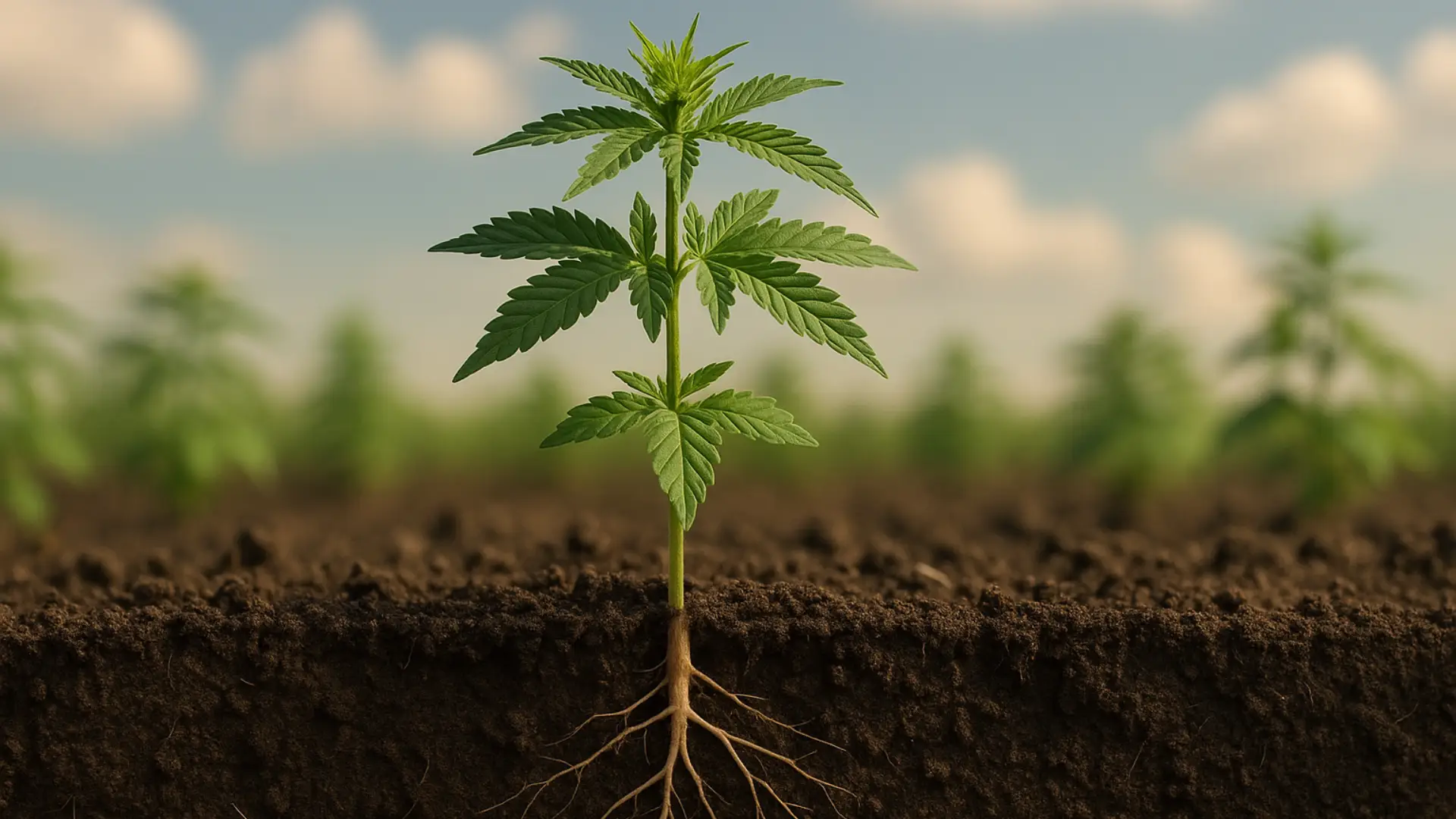Indoor Cannabis Cultivation: The Art and Science Behind Premium Flower
In the evolving cannabis marketplace, the distinction between average and exceptional flower often comes down to cultivation methods. At Bakeboxx, we specialize in premium indoor and exotic cannabis varieties that represent the pinnacle of cultivation craftsmanship. This comprehensive guide explores the intricate world of indoor cannabis cultivation, revealing why these methods produce superior flower and how to identify truly exceptional cannabis products.
The Evolution of Indoor Cannabis Cultivation
Indoor cannabis cultivation has transformed dramatically over the past several decades, evolving from simple closet grows with basic lighting to sophisticated operations employing cutting-edge horticultural science. This evolution reflects both technological advancement and deeper understanding of plant biology.
Historical Development
The journey of indoor cannabis cultivation parallels the plant's legal status and cultural significance:
- 1960s-1970s: Early experimentation with indoor growing began primarily as a means of avoiding detection during prohibition. Basic fluorescent lights and rudimentary understanding of plant needs characterized this era.
- 1980s-1990s: The introduction of high-intensity discharge (HID) lighting revolutionized indoor growing capabilities. Cultivators began developing more systematic approaches to nutrients, growing media, and environmental controls.
- Early 2000s: Medical cannabis legalization in various states spurred investment in cultivation research. Professional horticulturists and botanists entered the industry, bringing scientific rigor to previously underground knowledge.
- 2010s-Present: Full legalization in multiple regions created a competitive marketplace where quality differentiation became crucial. Advanced LED technology, environmental automation, genetic selection, and precision cultivation techniques emerged to create truly exceptional cannabis.
This progression has culminated in the current era of artisanal cannabis cultivation, where the finest indoor growers combine traditional knowledge with cutting-edge technology to produce flower with unprecedented potency, terpene profiles, and aesthetic qualities.
The Science Behind Indoor Excellence: Environmental Control
What truly separates premium indoor cannabis from outdoor or greenhouse varieties is precise environmental control. While outdoor growing connects plants to natural cycles and full-spectrum sunlight, indoor cultivation offers unparalleled consistency and optimization of every growth factor.
Light Management
Light is perhaps the most critical element in cannabis cultivation, directly impacting photosynthesis, plant structure, and cannabinoid/terpene production:
- Intensity: Indoor growers can provide optimal photosynthetically active radiation (PAR) levels throughout the plant canopy, something impossible to maintain consistently outdoors.
- Spectrum: Modern LED technology allows cultivators to adjust specific light wavelengths during different growth stages, enhancing vegetative growth, flower development, or trichome production as needed.
- Duration: Precise photoperiod control enables growers to trigger and maintain flowering without interference from seasonal changes or light pollution.
- Distribution: Advanced lighting setups ensure even light distribution, eliminating the shadowing that occurs naturally outdoors and producing consistently developed flower throughout the plant.
Research indicates that specific light spectrums directly influence cannabinoid and terpene synthesis pathways. Premium indoor growers leverage this knowledge to enhance desired chemical profiles in their plants.
Climate Precision
Beyond light, indoor cultivation allows for exacting control of atmospheric conditions:
- Temperature: Maintaining precise day/night temperature differentials (typically 75-80°F during light periods and 65-70°F during dark periods) optimizes plant metabolism and encourages resin production.
- Humidity: Progressive humidity programs that adjust relative humidity throughout the growth cycle (higher during vegetation, gradually lower during flowering) minimize pathogen risk while maximizing plant health.
- Air Movement: Calculated air circulation systems strengthen stems and create gentle stress that encourages trichome development without risking damage from outdoor elements.
- CO₂ Enrichment: Supplemental carbon dioxide (often maintained at 1200-1500 ppm) significantly enhances photosynthesis rates, leading to faster growth and potentially increased cannabinoid production when properly implemented.
Water and Nutrition Management
Indoor cultivation allows for precision that's unattainable in outdoor environments:
- Irrigation Control: Automated systems deliver exact water volumes at optimal intervals, preventing both drought stress and overwatering that can compromise quality.
- Water Quality: Reverse osmosis filtration and pH adjustment ensure water purity and optimal nutrient availability.
- Customized Feeding Programs: Stage-specific nutrient formulations address changing plant needs throughout the growth cycle, often adjusted in real-time based on plant response.
- Beneficial Microorganisms: Many premium cultivators incorporate mycorrhizal fungi and beneficial bacteria to enhance nutrient uptake and plant resilience naturally.
This level of precision creates optimal conditions for cannabinoid and terpene synthesis, directly translating to more potent, aromatic, and visually striking end products.
Genetics: The Foundation of Exceptional Indoor Cannabis
While environmental control maximizes plant potential, genetic selection provides the foundation for truly exceptional cannabis. Indoor cultivation has revolutionized cannabis breeding in several key ways:
Phenotype Selection and Stabilization
Indoor environments allow breeders to:
- Isolate and identify exceptional individual expressions (phenotypes) within genetic lines
- Control pollination with precision impossible in outdoor settings
- Maintain mother plants indefinitely through controlled vegetative conditions
- Test identical clones under different environmental parameters to optimize growth protocols
The result is increasingly specialized cannabis varieties with consistent expressions of desirable traits – something particularly evident in exotic cannabis lines that often display remarkable visual, aromatic, and effect profiles.
Breeding for Indoor-Specific Traits
Modern indoor cannabis breeding often selects for characteristics particularly valuable in controlled environments:
- Compact growth patterns: Efficient use of limited vertical space
- Shorter flowering periods: Maximizing facility throughput and efficiency
- Distinct terpene profiles: Creating unique sensory experiences that differentiate products
- Specific cannabinoid ratios: Tailoring chemical profiles for particular effects or medical applications
- Visual appeal: Enhancing bag appeal through color expression, trichome density, and bud structure
These breeding priorities have created cannabis varieties that truly excel under indoor conditions but might struggle in natural environments – explaining why some of the most sought-after exotic strains are exclusively grown indoors.
Cultivation Techniques: Artistry Meets Technology
Beyond environmental control and genetics, specific cultivation methodologies significantly impact cannabis quality. Premium indoor growers employ numerous specialized techniques:
Advanced Training Methods
Physical manipulation of plant structure optimizes light exposure and energy distribution:
- Low-Stress Training (LST): Gently bending and securing branches to create even canopies
- Screen of Green (SCROG): Utilizing mesh screens to train plants into flat, efficient canopies
- Strategic Defoliation: Removing select leaves to improve light penetration and air circulation
- Lollipopping: Removing lower growth to direct energy to primary flower sites
These approaches maximize yield while maintaining quality by ensuring all flowers receive optimal light and air circulation.
Precision Harvesting
Unlike outdoor cultivation where weather often dictates harvest timing, indoor growers can:
- Harvest each plant at its peak ripeness based on trichome development
- Selectively harvest plants by section, taking upper buds when mature while allowing lower flowers additional development time
- Time harvests to coincide with specific terpene expressions, which fluctuate throughout the day
- Execute extended dark periods pre-harvest to potentially increase resin production
This harvest precision contributes significantly to the exceptional quality of premium indoor flower.
Post-Harvest Excellence
While often overlooked, post-harvest handling profoundly impacts final quality:
- Slow, Cold Drying: Temperature and humidity-controlled drying rooms that gradually remove moisture over 10-14 days, preserving terpenes that would evaporate in faster drying
- Extended Curing: Allowing properly dried flower to cure in sealed containers for weeks or months, enhancing flavor profiles and smoke quality
- Cold Curing: Some premium producers utilize refrigeration during curing to preserve volatile terpenes
- Hand Trimming: Careful manual manicuring that preserves trichome integrity compared to machine trimming
These meticulous post-harvest practices often separate truly premium products from average commercial cannabis, regardless of how well the plants were grown.
The Indoor Advantage: Why It Creates Superior Products
The combination of environmental control, genetic selection, and specialized techniques creates several distinct advantages for indoor cannabis:
Cannabinoid Optimization
Indoor cultivation consistently produces higher cannabinoid concentrations for several reasons:
- Uninterrupted light cycles without weather variations
- Protection from environmental stressors that can divert plant energy
- Ability to push plants to their genetic potential through optimized nutrition
- Harvest timing based on peak ripeness rather than environmental factors
This often results in THC percentages 5-10% higher than outdoor equivalents of the same strain, along with more complete expression of minor cannabinoids.
Terpene Preservation and Enhancement
The aromatic compounds that give cannabis its distinctive scents and contribute to its effects are highly volatile and easily compromised. Indoor growing preserves these crucial components by:
- Protecting plants from terpene-degrading UV radiation
- Maintaining ideal temperature ranges for terpene production
- Controlling humidity to prevent mold issues that necessitate early harvests
- Enabling slow, cold drying that preserves volatile compounds
Premium indoor flower often contains 2-4 times the terpene content of outdoor equivalents, creating more complex aromas and potentially enhancing therapeutic effects through the entourage effect.
Visual and Sensory Qualities
The aesthetic appeal of indoor cannabis reflects both genetic potential and cultivation skill:
- Dense, compact bud structure resultant from ideal light intensity
- Vibrant coloration expressions (purples, blues, pinks) through temperature manipulation
- Exceptional trichome preservation due to protection from environmental damage
- Consistent size and appearance across harvests
While appearance doesn't directly impact effects, it often correlates with overall quality and care in production. The visual appeal of premium indoor and exotic varieties represents both artistry and horticultural precision.
Identifying Premium Indoor Cannabis: A Consumer's Guide
For cannabis enthusiasts seeking truly exceptional products, recognizing the hallmarks of quality is essential. Here's what to look for when shopping for premium indoor flower at Bakeboxx:
Visual Indicators
Quality indoor cannabis typically displays:
- Trichome Density: Abundant, intact crystal formations visible to the naked eye
- Proper Trim: Careful manicuring that preserves trichome-covered sugar leaves while removing excess fan leaves
- Intact Structure: Whole, undamaged buds rather than fragmented pieces
- Appropriate Moisture: Slightly springy when gently squeezed, not too dry or too damp
- Vibrant Colors: Rich greens possibly accented with purples, blues, or oranges, without brown discoloration
- Visible Resin: Sticky appearance without excessive handling
Aromatic Assessment
Premium flower presents complex, powerful aromas:
- Terpene Intensity: Strong scent detectable even through packaging
- Complexity: Multiple distinguishable notes rather than single-dimensional smells
- Freshness: Bright, lively aromatics without hay-like or ammonia notes
- Persistence: Scent that intensifies when the flower is broken apart or ground
- Cleanliness: No mustiness, chemical overtones, or other off-putting smells
Consumption Qualities
The ultimate test comes with consumption:
- Smooth Smoke/Vapor: Clean burn without harshness, indicating proper flushing and curing
- White Ash: When combusted, quality flower should produce light-colored ash rather than black residue
- Flavor Retention: Taste should mirror aroma and persist throughout the consumption experience
- Even Burn: Properly grown and cured flower burns consistently without "canoeing"
- Effect Complexity: Beyond mere potency, premium flower offers nuanced, multidimensional effects
The Economics of Indoor Cultivation: Understanding the Premium
Premium indoor cannabis typically commands higher prices than outdoor or greenhouse products. This price difference reflects several economic realities:
Production Costs
Indoor cultivation has substantially higher operating expenses:
- Energy Consumption: Lighting, climate control, and automation systems require significant electricity
- Infrastructure Investment: Specialized facilities with complex environmental systems represent major capital expenditure
- Labor Intensity: Proper care of premium plants demands skilled horticultural staff and meticulous attention
- Limited Scale: Truly artisanal production methods don't scale efficiently like commercial agriculture
- Longer Production Cycles: Extended flowering, drying, and curing periods for premium quality tie up facility space
Value Propositions
Despite higher costs, premium indoor cannabis offers distinct values:
- Consistency: Reliable experiences from purchase to purchase
- Potency Efficiency: Higher cannabinoid concentrations mean less material needed per session
- Experience Quality: Enhanced flavor, aroma, and effect profiles create superior experiences
- Specialized Varieties: Access to exotic genetics that cannot be effectively grown in natural environments
- Lower Health Risks: Reduced likelihood of pesticide residues, mold issues, or contaminants
Viewed through the lens of experience quality rather than simply gram weight, premium indoor cannabis often represents reasonable value despite higher prices.
Sustainability Challenges and Innovations
Traditional indoor cultivation faces legitimate sustainability criticisms, particularly regarding energy usage. However, the industry is actively developing solutions:
Efficiency Improvements
Modern indoor cultivation increasingly employs:
- LED Lighting: Reducing energy consumption by 30-50% compared to traditional HID systems
- Building Automation: AI-controlled environmental systems that optimize resource usage
- Water Reclamation: Closed-loop irrigation that recaptures and reuses water
- Renewable Energy: Solar, wind, and other clean energy sources powering cultivation facilities
- Heat Recovery Systems: Capturing and repurposing heat generated by lighting systems
Hybrid Approaches
Some producers are developing methods that combine advantages of different cultivation styles:
- Light-Assisted Greenhouses: Using natural sunlight supplemented with artificial lighting
- Indoor-Outdoor Rotation: Vegetative growth outdoors with final flowering in controlled environments
- Semi-Controlled Environments: Open-air structures with partial climate control
These approaches aim to maintain quality while reducing environmental impact.
The Future of Indoor Cannabis Cultivation
The ongoing refinement of indoor cultivation demonstrates continuous innovation in several exciting directions:
Technological Advancement
Emerging technologies poised to further enhance indoor cultivation include:
- Spectral Tuning: Increasingly specific light recipe adjustments based on genetic responses
- Machine Learning: AI-driven growth optimization based on thousands of data points
- Aeroponic Systems: Soil-free cultivation that maximizes nutrient delivery and root health
- Computer Vision Monitoring: Automated plant health assessment and problem identification
- Terpene Tracking Systems: Real-time analysis of aromatic development to optimize harvest timing
Genetic Frontiers
Cannabis breeding continues to develop varieties specifically optimized for indoor conditions:
- Cannabinoid Diversity: Varieties high in minor cannabinoids like CBG, CBC, and THCV
- Terpene Specialization: Plants with unprecedented aromatic combinations
- Autoflowering Advancements: Day-neutral plants with improved quality and yield
- Structure Optimization: Architecturally efficient plants that maximize productive canopy
- Resilience Traits: Disease and pest resistance reducing intervention needs
Consumer Education
As the cannabis market matures, consumer sophistication regarding quality assessment is increasing:
- Greater appreciation for terpene profiles and minor cannabinoids beyond THC percentage
- Understanding of cultivation methods and their impact on final product quality
- Recognition of proper curing and handling as quality factors
- Willingness to invest in premium products for superior experiences
This education creates market incentives for quality-focused cultivation practices.
Craft Cannabis: The Artisanal Approach
Beyond commercial production, a significant segment of indoor cultivation embraces truly artisanal methodology:
Small-Batch Production
Craft cannabis producers often emphasize:
- Limited plant counts allowing individual attention to each plant
- Hand watering and daily inspection of every plant
- Small batch processing that maintains quality control
- Direct grower involvement throughout the entire process
- Personal relationships with retailers and consumers
Cultivation Philosophy
Many craft producers approach cannabis cultivation as a holistic discipline:
- Living soil methodologies that create complex microbial ecosystems
- Organic inputs and natural pest management
- Traditional techniques combined with modern knowledge
- Continuous refinement of methods based on results
- Commitment to genetic preservation and development
At Bakeboxx, we partner with craft producers who embody these artisanal values, bringing their exceptional products to our discerning customers.
Conclusion: The Informed Cannabis Consumer
Understanding indoor cannabis cultivation empowers consumers to make more informed choices when selecting premium flower. The knowledge of what makes exceptional cannabis exceptional—from environmental control to genetic selection to cultivation techniques—provides context for appreciating the artistry and science behind truly remarkable products.
At Bakeboxx, our commitment to curating the finest indoor and exotic cannabis reflects our passion for quality and our respect for the craft of cultivation. We invite you to explore our carefully selected inventory, engage with our knowledgeable staff about specific cultivation details, and discover the remarkable difference that proper indoor growing methods make in your cannabis experience.
Whether you're a connoisseur seeking rare exotic genetics, a medical user requiring consistent potency and effects, or simply someone who appreciates premium quality in all things, understanding indoor cultivation helps you recognize and appreciate truly exceptional cannabis. Visit Bakeboxx to experience the pinnacle of indoor cultivation craftsmanship firsthand.





